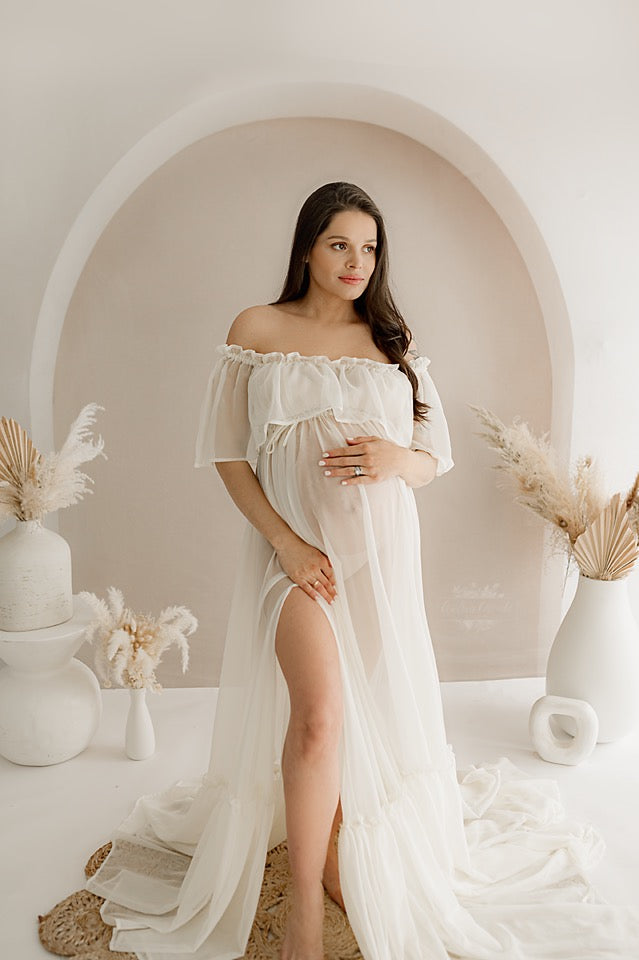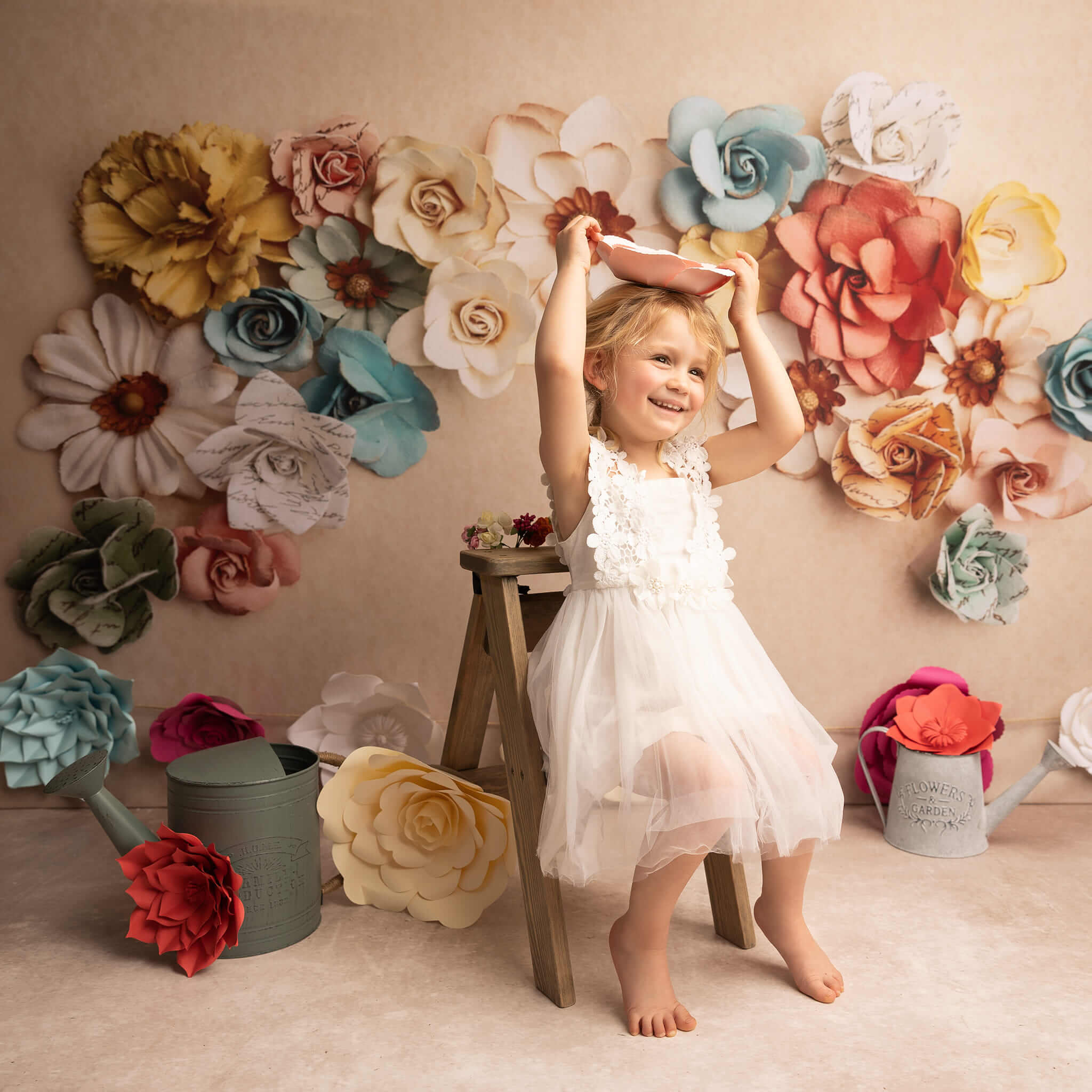When choosing the perfect film for your photography adventures, two popular options often come to mind: Kodak Gold 200 and Fuji Color 200. But which one should you choose? This article will compare these iconic films, examining their characteristics, color rendition, grain, and overall performance. You'll better understand which film suits your photographic needs by the end. So, let's dive in and explore the differences between Kodak Gold 200 and Fuji Color 200.
What do Kodak Gold 200 and Fuji Color 200 Have in Common?
Despite being produced by different manufacturers (Kodak and FujiFilm, respectively), they share several similarities, including:
35mm Roll Film
Kodak Gold 200 and Fuji Color 200 are in 35mm format. 35mm roll film is a widely used film format that comes in a cartridge or canister and is loaded into cameras equipped to handle it.
Daylight Balanced to 5500K
They are both daylight balanced, which means they are designed to reproduce colors accurately under normal daylight conditions. By being daylight balanced, these films are optimized to produce accurate colors when shooting in outdoor or well-lit environments.
ISO Sensitivity of 200
Kodak Gold 200 and Fuji Color 200 have an ISO sensitivity of 200. A lower ISO value, such as 200, indicates lower sensitivity, which is ideal for daylight photography.
Grain Structure
Kodak Gold 200 and Fuji Color 200 exhibit a relatively fine grain structure. The grain is not overly prominent with these films, resulting in smoother, more refined images.
Kodak Gold 200 vs. Fuji Color 200
Kodak Gold 200
Warm Tone

Kodak Gold 200 film produces a warm tone in photographs. It works best with subjects that have warm colors like orange, red, and yellow. The warm tone adds a pleasing and nostalgic look to the images, enhancing the overall aesthetic.
Realistic Color
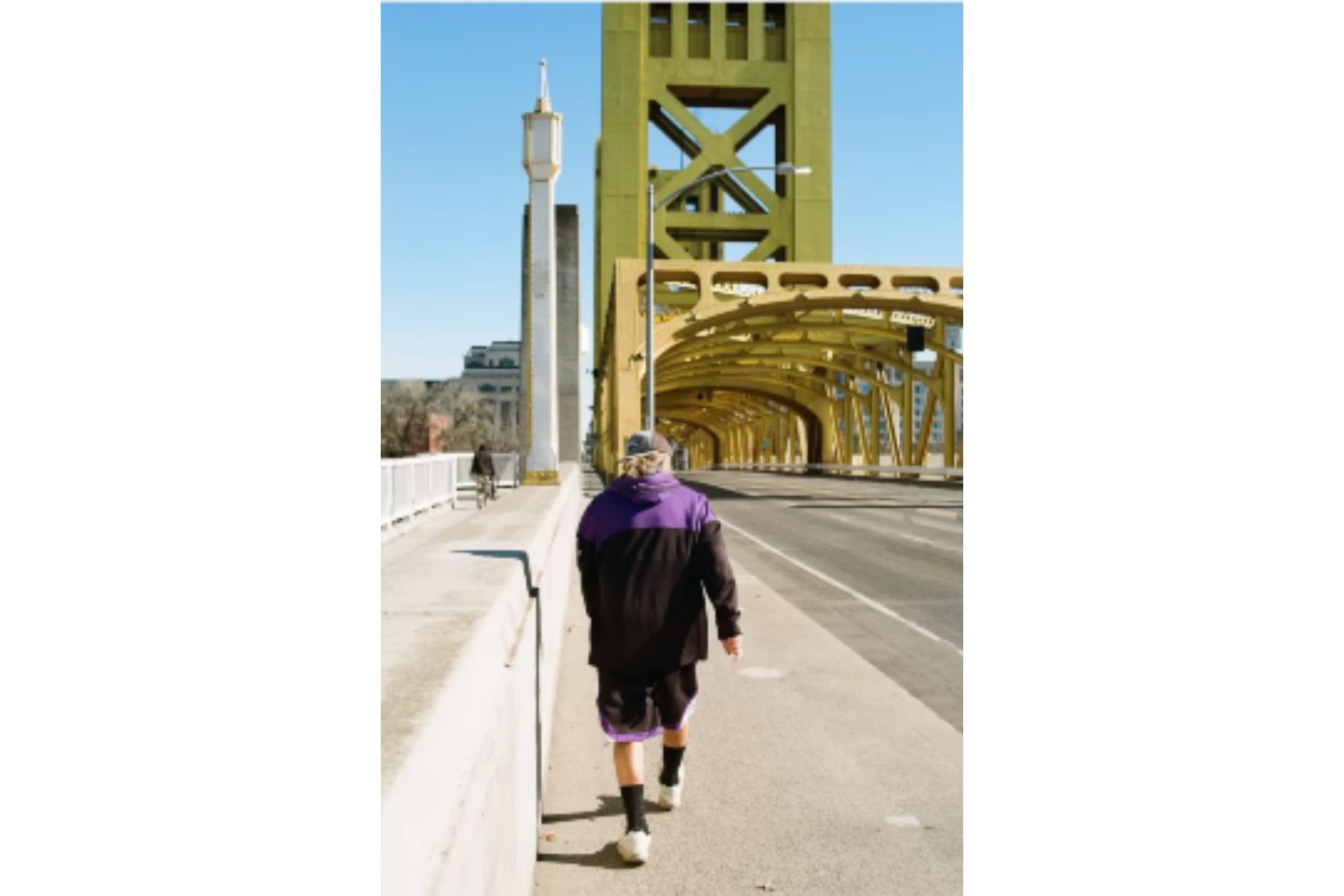
Kodak Gold 200 film reproduces colors in a way that closely resembles how our eyes perceive them. This feature makes it suitable for various subjects, from landscapes to portraits, ensuring the colors appear natural and true to life.
Relatively Chunky and Noticeable Grain

This grain structure adds a unique texture to the images, giving them a vintage and film quality. While some may prefer a smoother and less grainy look, the distinct grain of this film can be appreciated for its nostalgic charm.
Fuji Color 200
Cold Tone

Fuji Color 200 film produces a cold tone in photographs. It works best with subjects that have cool colors like blue and green. The cold tone adds a cool, serene atmosphere to the images, creating a distinct visual aesthetic.
Enhance Color

Fuji Color 200 film is designed to enhance colors, making them more vibrant and saturated. It adds a pop to the colors in the images, making them visually appealing and vivid. This feature is particularly beneficial when capturing landscapes, nature, or colorful scenes where the vibrant colors can be accentuated.
A Little Bit of a Finer Grain

Image credit: youtube.com
Fuji Color 200 has a slightly finer grain structure compared to some other films. This results in smoother and less noticeable grain in the images, providing a cleaner and more polished look. The finer grain allows for better image detail and can be preferable for those seeking a smoother overall appearance.
Realistic Effects Captured with Kodak Gold 200 and Fuji Color 200
1. Animals
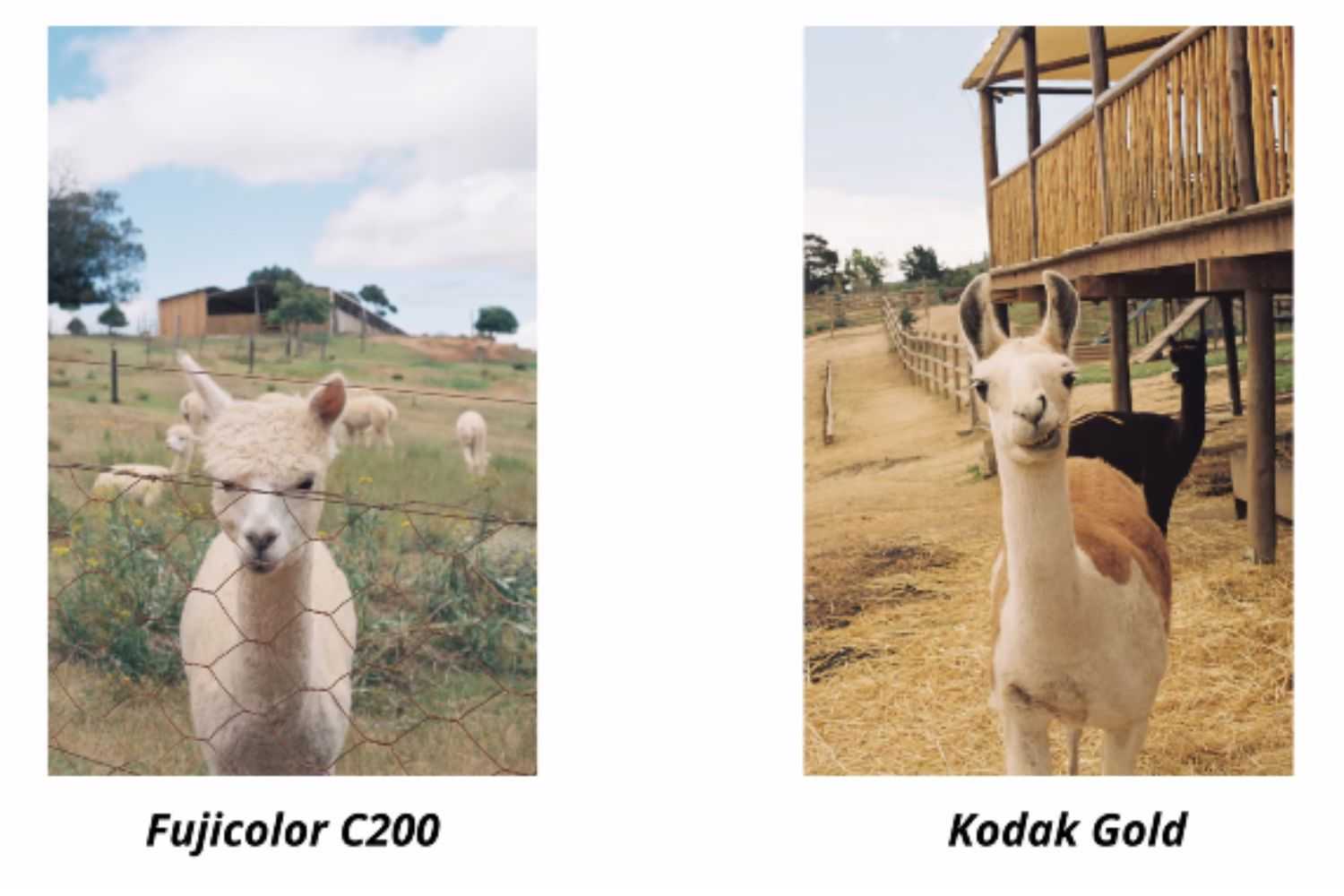
The C200 image of an alpaca exhibits a slightly more subtle graduation and separation of colors, particularly noticeable in the green tones that stand out compared to the blues. There is no overwhelming overall color cast present in the image. On the other hand, the Gold image of a llama showcases a pronounced yellow cast. The entire scene, including the sky and the alpaca's fur, appears tinted with a warm yellow hue.
2. Portraits

The Fuji Color film stock imparts a pinky magenta hue to the skin tones, while the sandy shades in the subject's hair appear more muted and neutral. On the other hand, the Kodak Gold film produces a yellowish and warm tone in the skin, giving it a noticeable yellow cast. Even the highlights in the subject's hair lean towards a yellowed hue.
3. Structure
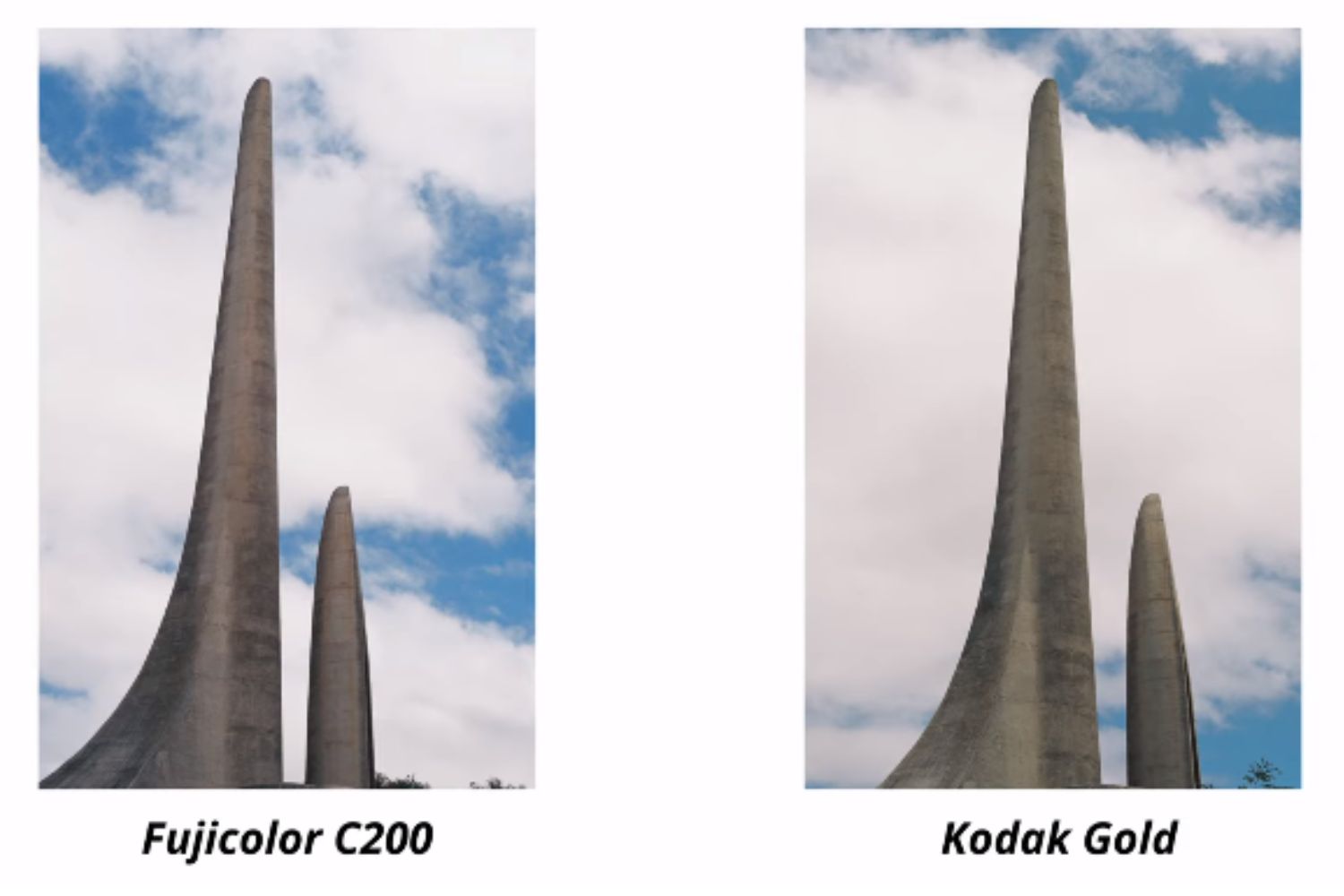
The C200 image has a noticeable magenta cast, enhancing the pinks and reds in the concrete structure.While, the Gold image has a greenish-yellow wash, giving a distinct color tone to everything.
4. Pastoral Landscape
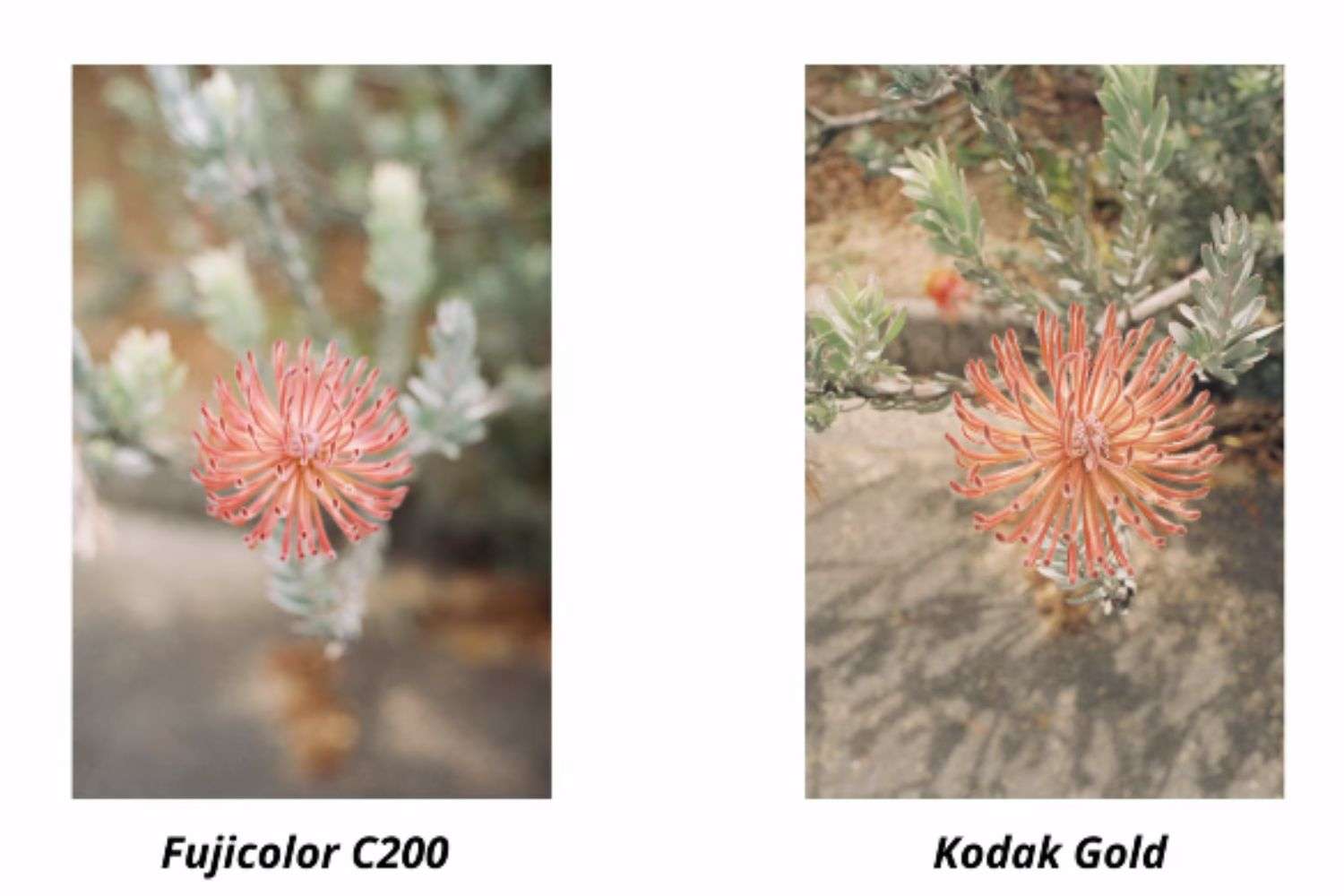
Image credit: youtube.com
In the Kodak Gold 200 image, the head of the protea flower displays vibrant orange tones, while the Fuji Color 200 image captures subtle, nuanced pink tones in the same area. Additionally, the leaves of the protea bush in the Kodak Gold 200 image have a green-yellow wash, whereas, in the Fuji Color 200 image, the leaves lean towards a more cyan tone.
Conclusion
Kodak Gold 200 and Fuji Color 200 are excellent film options catering to different preferences and shooting styles. Kodak Gold 200 is known for its warm tones, vibrant colors, and high contrast, making it ideal for capturing vivid landscapes and portraits.
Fuji Color 200 offers a more balanced color rendition, natural skin tones, and finer grain, making it a popular choice for everyday photography and diverse lighting conditions.
If you like this article, please share it! Be sure to join our FB Group: https://www.facebook.com/groups/Katebackdrops/ to share your ideas! You can also receive free articles, updates as well as discounts information from https://www.katebackdrop.com/ and our FB Group.

 Custom Printed Fabric Backdrops
Custom Printed Fabric Backdrops Custom Rubber Floor Mats
Custom Rubber Floor Mats Custom Collapsible Backdrops(double-sided)
Custom Collapsible Backdrops(double-sided) Custom Hand Painted Canvas Backdrops
Custom Hand Painted Canvas Backdrops Custom Vinyl Backdrops
Custom Vinyl Backdrops Arch
Arch